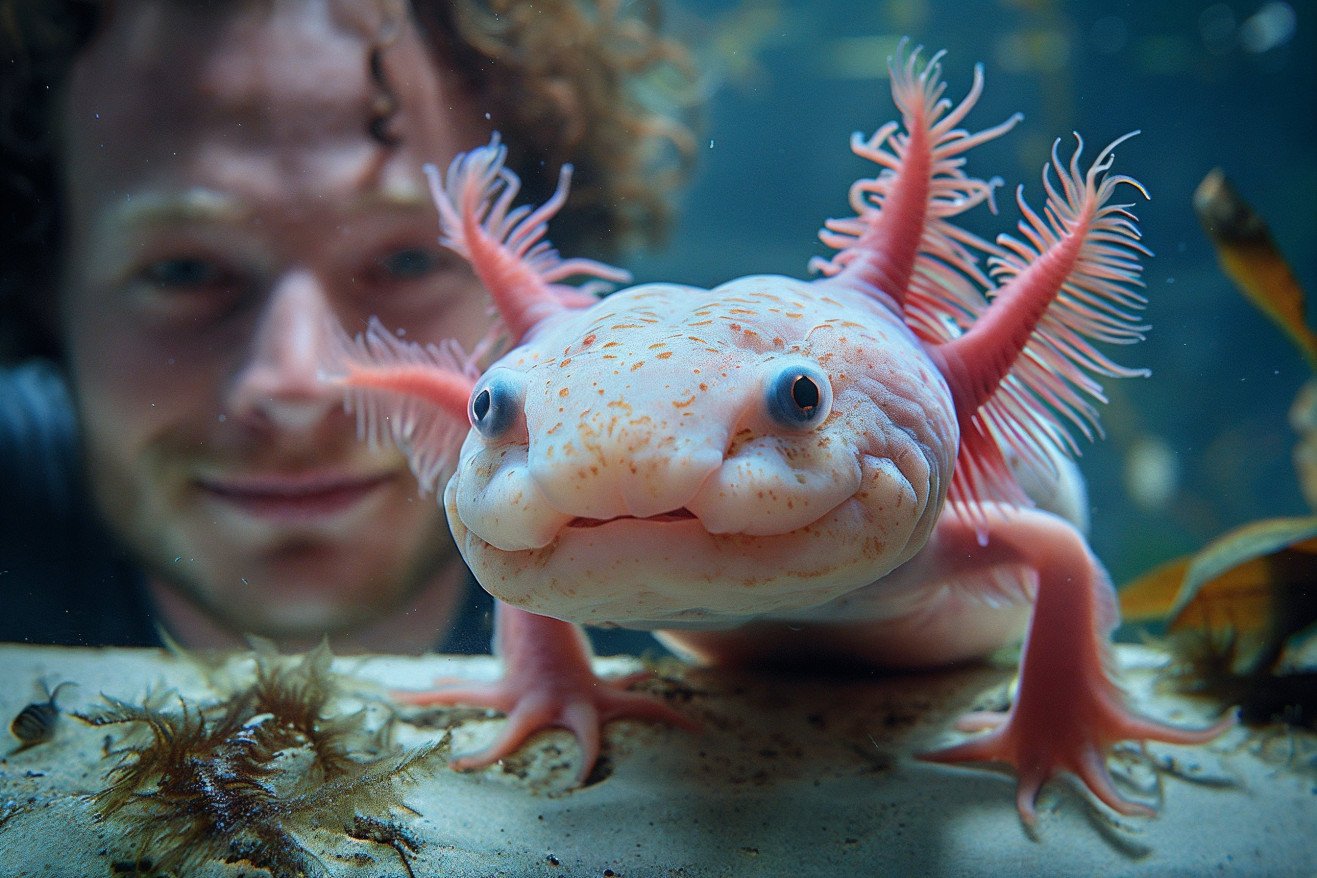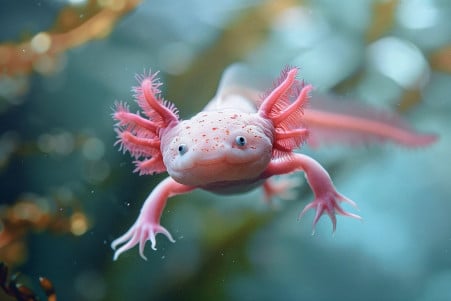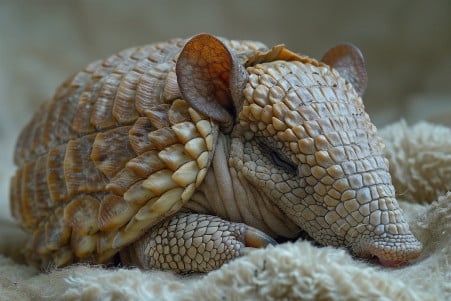Can You Hold an Axolotl? Understanding Safe Axolotl Handling
17 March 2024 • Updated 15 March 2024

With their alien-like looks, axolotls are fascinating creatures, but can you add handling to their list of care requirements? No, experts advise against handling axolotls due to their delicate skin and susceptibility to stress. If you must handle them, use a net and keep them in the water to avoid injury and stress.
This article will delve into a wide range of biological, environmental, and husbandry studies that inform the debate on handling axolotls. This will involve research from veterinary science, herpetology, and animal behavioral studies in order to fully understand the fragility of axolotls. Throughout this discussion, we will cover what these studies have found about axolotls’ captivity requirements, the impact of handling on their health, and how to make sure their needs are met.
Can you hold an axolotl?
Axolotl Physiology and the Risks of Handling
Axolotls are known for their ability to heal wounds without scarring, a phenomenon that demonstrates their impressive regenerative powers. A study published in PMC explains that axolotls can regenerate their skin and other tissues without leaving a scar, a rare ability among vertebrates.
This is in part due to the axolotl’s thin skin, which is covered in a protective layer of mucus called the slime coat. The slime coat is important for protecting the axolotl from infection and for helping to maintain the animal’s internal moisture levels.
When axolotls are handled, the slime coat can be disturbed, leaving them more susceptible to infection and other environmental stressors. While the same study explains that the axolotl’s immune response to stress and injury is very effective, handling should still be kept to a minimum to avoid potential health problems. Unnecessary handling can lead to stress, which can suppress the immune system and leave the animal vulnerable to a range of health problems.
When handling is necessary, it’s best to use minimal handling techniques, such as using a net to guide the axolotl rather than picking it up with your hands. This will help protect the axolotl’s sensitive physiology and ensure that it stays healthy. The axolotl’s regenerative abilities are a biological wonder and highlight the importance of carefully managing their health in captivity.
Navigating Legal Waters: How to Own an Axolotl Ethically
Before you decide to bring an axolotl into your life, it’s important to know that the legal restrictions on keeping them as pets are complicated and vary widely around the world.
In the United States, for example, some states like California, Maine, and New Jersey have banned axolotl ownership to protect native species, while others require permits, as shown on World Population Review.
Meanwhile, a post by AquariumStoreDepot notes that axolotls are considered critically endangered and points out that this has ethical implications for pet ownership, which should be helping conservation efforts rather than working against them by further endangering the species’ already small and shrinking wild population.
To be responsible, prospective axolotl owners need to make sure that their care meets both legal requirements and ethical standards. This includes making sure that they get their axolotl from a reputable source that’s committed to animal welfare and the species’ survival.
By getting an axolotl from a reputable breeder or rescue organization instead of an unlicensed online seller, prospective owners can help ensure the welfare of captive axolotls and the survival of the species.
When you bring an axolotl into your home, you’re not just taking on the responsibility of caring for it on a day-to-day basis, you’re also taking on the responsibility of helping to save a species that’s on the brink of extinction.
However, if you know the species’ natural behaviors and signs of stress, you can meet this ethical responsibility by providing a home that’s in line with their natural needs and that supports their well-being.
Understanding Axolotl Behavior and Stress
It is important to understand the behavior of axolotls in captivity in order to ensure their welfare.
Axolotls are solitary animals and will show signs of stress if they feel threatened or uncomfortable. Animal Diversity Web explains that axolotls use visual and chemical signals to understand their surroundings and are generally calm animals.
Signs of stress in axolotls can include a loss of appetite, lethargy, and trying to escape from their tank. In addition, an article in ScienceDirect explains that during the mating season, axolotls may exhibit a waltz or circular movement, which is a normal mating behavior and should not be mistaken for stress.
Axolotls may also exhibit stress when being handled, with signs of stress including swimming erratically, gill movement, and a curled tail.
It is important to pay attention to these signs of stress as they will help you understand the axolotl’s well-being and comfort levels.
It is also important to set up an environment that minimizes the need for handling. This includes setting up a tank that is as close to their natural habitat as possible.
Setting Up the Perfect Tank for Your Axolotl
In order to make sure your axolotl is as comfortable as possible, it’s important to make sure that you have the right tank setup.
The Ideal Axolotl Tank Guide explains that water quality and temperature are the most important factors to consider when setting up a tank.
Make sure the water is kept at a temperature between 60–65 degrees Fahrenheit and never rises above 75 degrees Fahrenheit, which is the temperature at which axolotls start to experience stress.
The Guide to Axolotl Husbandry suggests that a good tank setup includes a large tank with at least 15 to 20 gallons of water per axolotl. This will ensure that the water quality stays high and that the tank can be properly enriched with hides, plants, and rocks. It’s also important to keep up with regular maintenance, including water changes, filter cleaning, and monitoring ammonia, nitrite, and nitrate levels.
By setting up and maintaining this kind of environment, we can make sure that the axolotl is exposed to as little stress and as few health issues as possible, which will reduce the need for handling. This kind of care in their environment is a way to respect their natural habitat, their fragility, and their well-being in captivity.
Considering the Fine Line of Axolotl Husbandry
In our quest to learn about the best ways to care for axolotls, we have come to one inescapable conclusion: it is not recommended to handle these mysterious animals. Their physiology, which includes a thin, sensitive skin and the ability to regenerate, makes it necessary to take a hands-off approach to avoid disrupting their protective slime coat and causing stress.
Studies of axolotls in captivity have shown that they exhibit signs of stress when they are handled, which suggests that any interaction with them should be based on respect and be as non-invasive as possible.
However, the ethical considerations of keeping an axolotl go beyond the need to care for their physical well-being. As mentioned, this also includes legal and conservation concerns, as well as the need to provide an environment that is free of stress and in line with the axolotl’s welfare. The best habitat we can provide for them is a reflection of our care and respect for their fragile existence.
In the end, while axolotls are fascinating animals, it is our duty to ensure their well-being through informed, compassionate care. We can best do this by respecting their silent underwater world, which means minimizing handling, protecting their natural environment, and ensuring their survival in both captivity and the wild.


